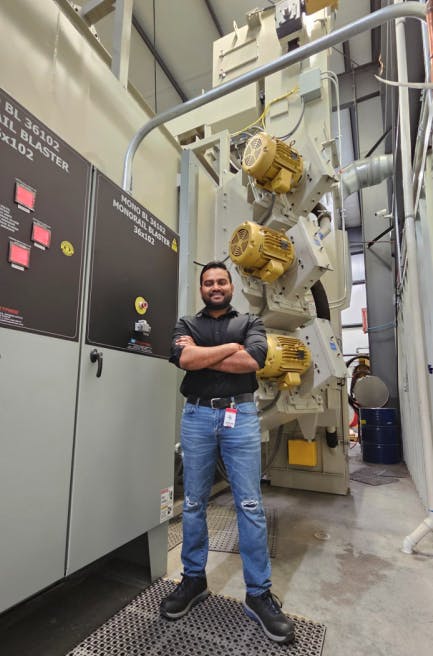In the giant industrial web that propels defense fleets, railway networks, and aerospace technologies, most of the development occurs not in headlines but on factory floors, where equipment forges the precision and durability of the materials that propel the world. Shot peening, a surface treatment technique that imbues residual compressive stress to harden components, is such an unsung technology.
It determines whether an aircraft’s wing spar resists fatigue, a rail axle endures decades of cyclic stress, or a naval structure withstands the corrosive effects of saltwater. The shift from manual air peening to automated, wheel based systems represents a quiet revolution, one measured not in slogans, but in milliseconds, microns, and megawatts saved.
Amid this silent transformation stands Utkarsh Ashok Singh, a mechanical engineer whose career has been defined by building, tuning, and scaling wheel type shot peening and surface-treatment machinery across defense, aerospace, and heavy structural steel industries. Over the years, Singh has turned a complex interplay of airflow, impact velocity, and material science into a disciplined, repeatable engineering practice.
“When you work on machines that touch national defense or aircraft manufacturing, precision isn’t just technical, it’s ethical,” says Singh. “Every decision, from wheel placement to media purity, has consequences that travel far beyond the shop floor.”
Singh led the design and commissioning of a wheel-type shot-peening cell that replaced a manual, single-operator air routine which previously took approximately one week per part. Today, the same component moves through the blast chamber on an integrated monorail in around 25 minutes. Energy per part fell from roughly 0.48–0.72 tonnes CO₂e to about 0.012–0.015 tonnes CO₂e per part (assumes 0.40 kg CO₂/kWh). The integrated monorail fixed standoff and throw-angle geometry for a continuous pass, and audits passed at 100 per cent both at commissioning and in production.
“Efficiency gains matter, but sustainability is now a design parameter,” Singh explains. “When a process reduces energy and carbon intensity by 98 percent, that’s not just good engineering, it’s good stewardship.”
Above speed and sustainability, Singh's engineering expertise revolutionized process reliability. His systems provide 98 percent consistency of coverage while sustaining precise Almen intensity bands of between 0.006 - 0.010 A, so that even thin aerospace alloys do not deform or suffer stress mismatch. Every choice, capping wheel RPMs to about 1,800 to shield thin sections, zoning throw angles, tuning media flow, demonstrates a systematic precision that transforms peening from an art form into a measurable science.
Interestingly Singh’s approach is not limited to hardware, it's about building an intelligent ecosystem around machines. He envisions adaptive zoning that can self-adjust wheel speed and media flow by real-time feedback, reducing re-passes by up to 30 percent. Pattern shaping through control cage geometry refinements could cut material overlap waste by 15 percent. His current research focuses on embedding AI vision modules for real-time coverage scoring and predictive models that anticipate maintenance needs before they disrupt production.
“AI won’t replace engineers,” Singh remarks. “It will make good engineers better”. The direction of travel is clear. AI will be introduced in three places: vision for coverage scoring, predictive maintenance from vibration and current traces, and an adaptive controller for wheel speed, media flow, and monorail speed, so the cell can cut re-passes and hold steadier coverage without changing how operators work. These are planned pilots, on-device, with privacy preserved.
For the industries he serves, these are not abstract ideas; they are the foundation for a future in which every component, every cycle, and every kilowatt counts. As aerospace and defense manufacturers face mounting pressures for both performance and sustainability, Singh’s work demonstrates that innovation often hides in the machinery behind the product, in the deliberate calibration of steel, speed, and intelligence.
This story was distributed as a release by Sanya Kapoor under HackerNoon’s Business Blogging Program.


